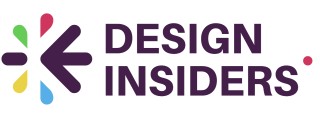
The Role of Cognitive Bias in Ad Design
Embracing the Influence of Cognitive Bias
Cognitive biases are mental shortcuts that our brains use to simplify decision making. In advertising design, understanding these biases helps marketers create campaigns that resonate with consumers on a psychological level. When brands leverage these biases effectively, they can influence consumer behaviour, often resulting in increased engagement and sales.
Marketing is rooted in psychology, and cognitive biases play a crucial role in shaping the ads we see daily. For example, cognitive biases like confirmation bias allow consumers to favor information that supports their pre-existing beliefs. This can be harnessed by brands to reinforce positive perceptions of their products.
People tend to rely on social proof, often driving decisions in product preferences when they see others -- especially in their social circles -- endorsing a brand. Social media has amplified this effect. As such, ad design benefits significantly from showcasing testimonials and user reviews, enhancing the credibility of the product or service.
Imagine a limited time offer on the next social media scroll showing scarcity bias in action. This drives customers to make impulsive decisions, fearing they'll miss out on a good deal. Similarly, anchoring bias can be highlighted through strategic pricing strategies where consumers base their decisions on the initial piece of information offered.
Through strategic ad campaigns, brands can subtly guide customers' decisions, increasing the likelihood of choosing their products. As marketing continues to evolve with digital advancements, the role of cognitive bias remains pivotal in creating impactful ads.
Understanding and utilizing cognitive biases responsibly in advertising eventually leads to more authentic communication. Marketers can craft content that genuinely connects with their audience, establishing a stronger brand identity. For more insights into creating an impactful visual communication, consider exploring effective brand storytelling.
Common Cognitive Biases in Marketing
Recognizing Biases in Consumer Decisions
Understanding the impact of cognitive biases in marketing is crucial for brands aiming to connect with their audience effectively. These biases influence how consumers perceive and interact with products and services, often shaping their purchasing decisions in subtle yet significant ways. By identifying these biases, marketers can tailor their strategies to better align with consumer behaviour.
Key Cognitive Biases in Marketing
Several cognitive biases play a pivotal role in how people make decisions about brands and products:
- Confirmation Bias: Consumers tend to favor information that confirms their existing beliefs. This bias can be leveraged by marketers to reinforce positive perceptions of their brand.
- Anchoring Bias: The initial piece of information people receive influences their subsequent judgments. For example, displaying a higher initial price can make a discounted price seem more appealing.
- Social Proof: People tend to follow the actions of others, especially in uncertain situations. Highlighting customer reviews and testimonials can effectively utilize this bias.
- Loss Aversion: Consumers prefer avoiding losses to acquiring equivalent gains. Limited-time offers and exclusive deals can tap into this bias to boost sales.
- Scarcity Bias: Products perceived as scarce or limited in availability often appear more valuable, encouraging quicker purchasing decisions.
- Mere Exposure Effect: Repeated exposure to a brand or product increases familiarity and likability, making it more likely for consumers to choose it over less familiar options.
- Authority Bias: People tend to trust and follow the advice of perceived experts. Collaborations with industry leaders or influencers can enhance brand credibility.
Understanding Biases for Effective Marketing
For marketers, recognizing these biases is not just about manipulating consumer decisions but about understanding the underlying psychological triggers that drive consumer behavior. By aligning marketing strategies with these cognitive patterns, brands can create more engaging and effective campaigns. For a deeper dive into how storytelling and visual design can evoke emotion and enhance marketing efforts, explore this resource on brand storytelling and visual design.
Design Strategies Leveraging Cognitive Bias
Smart Design Techniques to Tap into Consumer Minds
To effectively harness cognitive biases in advertising design, marketers can implement strategic approaches that subtly influence consumer behavior while respecting ethical lines. Designing with cognitive insights not only boosts sales but also fortifies brand connections with customers.
- Leveraging Social Proof: People tend to follow the actions of others. By highlighting reviews, testimonials, or user-generated content, brands can use social proof to create a sense of trust and reliability. Showcasing positive consumer behavior encourages new customers to follow suit.
- Exploiting the Scarcity Bias: Limited time offers or low stock alerts tap into scarcity bias. Consumers feel urgency and make quicker decisions to secure the product or service before it becomes unavailable. This strategy, when used wisely, can significantly increase conversion rates.
- Anchoring The Product Experience: Anchoring bias can be employed by presenting initial high benchmarks that influence consumers' perceptions and expectations. A higher “anchor” price compared to subsequent offers can make a deal appear more attractive, guiding decision-making in favor of the product.
- Creating Familiarity Through Mere Exposure: The more people see an ad, the more likely they are to develop a preference for the product. Repetitive exposure via social media, digital channels, or traditional ads reinforces consumer behavior by positively impacting their perceptions.
- Authority Bias Enforcing Brand Credibility: Displays of expertise or endorsements by industry experts can leverage authority bias. This approach increases brand trustworthiness and makes the company more appealing to skeptical consumers.
Design strategies informed by cognitive biases facilitate subtle yet powerful ways to engage consumers and influence their purchasing decisions. However, marketers should be mindful of the fine line between influence and manipulation, ensuring that these techniques are used to genuinely benefit consumers and brands alike.
Ethical Considerations in Using Cognitive Bias
Balancing Ethics in Leveraging Cognitive Biases
Incorporating cognitive bias into advertising design requires a careful ethical approach. While these psychological shortcuts can effectively influence consumer behavior, marketers must tread lightly to avoid manipulative tactics. Being transparent is crucial when integrating elements like social proof or scarcity bias in ads. Consumers, when informed, make more authentic choices, aligning their decisions with genuine needs and beliefs. Additionally, marketers must reflect on how biases like confirmation or authority impact consumer perception. These biases, when skillfully utilized, can bolster trust in a brand's product or service. However, they can just as easily mislead consumers if wielded irresponsibly. For instance, employing authority bias should enhance the brand's reliability, rather than falsely fabricate expertise.Promoting Honest Consumer Engagement
Honesty in advertising fosters long-term consumer trust. When digital marketing campaigns, for example, utilize anchoring bias to present a perceived value of a product, it should be done with integrity. The ethical stance is to ensure any "limited time" or "exclusive deal" message genuinely reflects scarcity without exaggerating the product's worth. Brands must remain vigilant not to exploit a consumer's loss aversion unfairly. While this bias can drive urgency in purchasing decisions, it is essential to preserve the consumer's confidence and decision-making autonomy. It allows consumers to feel empowered rather than pressured, thereby sustaining positive brand-consumer relationships. Ethical consideration is paramount in maintaining a balance between leveraging bias marketing strategies and upholding the social responsibility of delivering genuine, honest commercial content. Only through these ethical practices can brands truly achieve sustainable success in influencing consumer behavior.Case Studies: Successful Ad Campaigns Using Cognitive Bias
Real-World Examples of Cognitive Bias in Advertising
In examining the impact of cognitive bias in advertising design, several campaigns have effectively utilized these biases to engage consumers and enhance sales. These case studies illuminate how brands have strategically influenced consumer decision-making by leveraging psychological tendencies.
One notable approach involves the use of social proof. A well-known digital marketing campaign demonstrated the power of this bias by showcasing real customer testimonials and endorsements on their platform. By displaying that others are using and enjoying a product, companies effectively built a sense of trust and influenced potential customers' decisions to purchase.
The concept of scarcity bias was effectively employed by a leading e-commerce brand that introduced a 'limited-time' sale strategy. Marketers capitalized on consumers' fear of missing out, propelling sales significantly within the short promotional window. This tactic has become a staple in bias marketing, driving urgency and catalyzing swift buying behavior.
Another compelling example is seen through the application of authority bias. An automotive brand collaborated with industry experts to create content that highlights the unique features of their new product. By leaning on the credibility of respected figures, the advertisements succeeded in convincing consumers of the product's superiority, boosting consumer trust and sales.
Mere exposure effects were utilized successfully in a series of ads that consistently featured the same visual elements and messages across diverse social media platforms. As people tend to develop a preference for things frequently seen, this strategy not only increased brand recall but also fostered a positive brand image among potential consumers.
These examples underscore the potential of cognitive biases in shaping marketing campaigns and suggest that thoughtful application can lead to substantial market successes. As consumer behavior continues to evolve, marketers who harness these biases will likely maintain a competitive edge.














